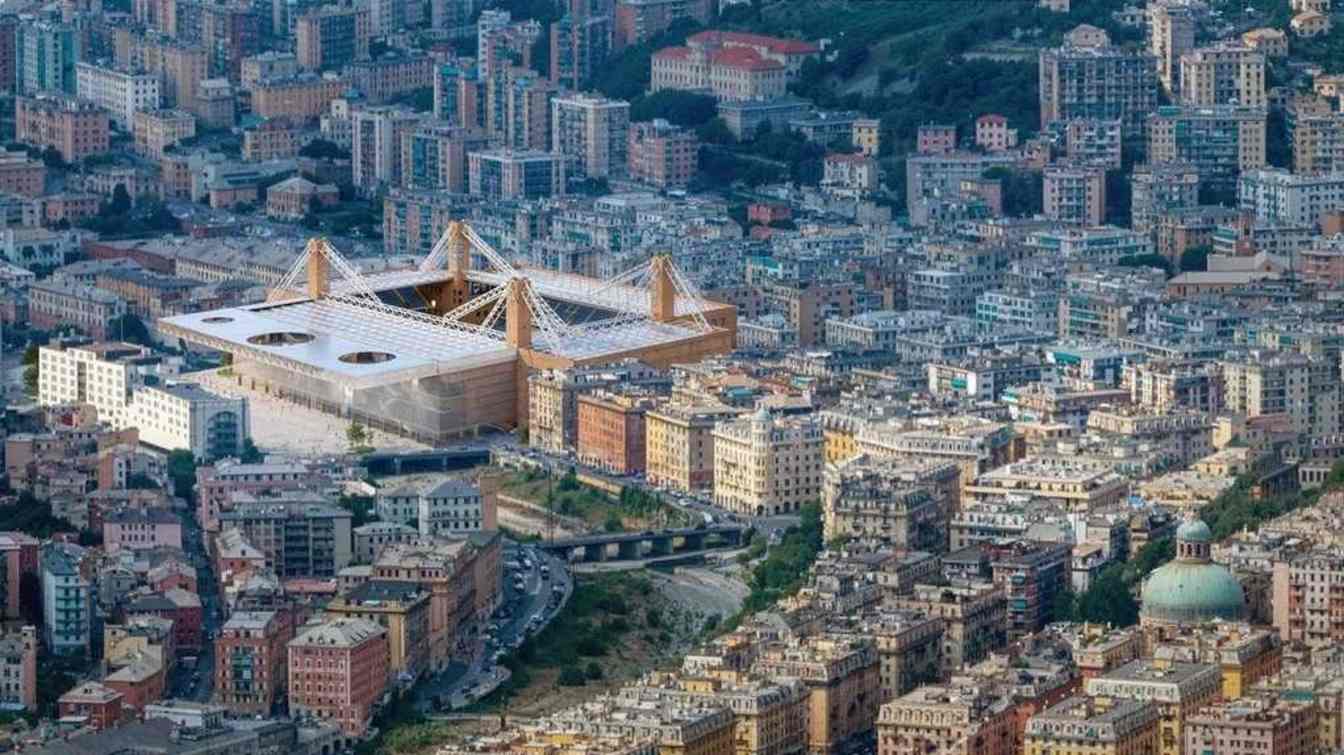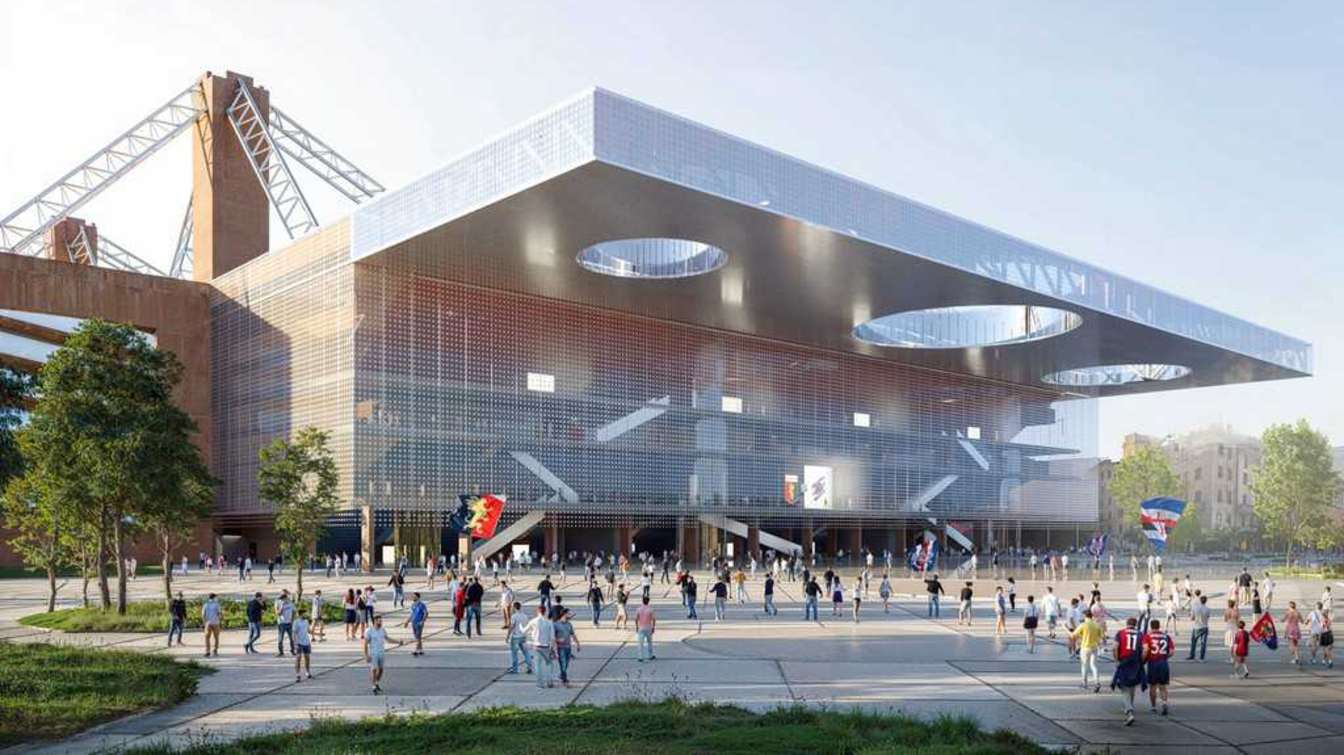Italy: Luigi Ferraris stadium set for a new life before EURO 2032
source: StadiumDB.com; author: Paulina Skóra
 In recent days, Genoa authorities confirmed they had received preliminary documentation on various options to modernize Stadio Luigi Ferraris, along with the project’s financial plan.
In recent days, Genoa authorities confirmed they had received preliminary documentation on various options to modernize Stadio Luigi Ferraris, along with the project’s financial plan.
Advertisement
Goal: Euro 2032
Until the final documents are submitted, the so-called conference of services
procedure—a key administrative step—cannot begin. Genova Stadium, the company overseeing the project, has requested an additional meeting with city technical departments to clarify specific details, expected soon.
Available information indicates the investment will be jointly financed by Genoa and Sampdoria, who in return would receive a 99-year concession to operate the stadium. The aim is to restore the venue to its former glory and bring it up to modern European standards, both in sporting infrastructure and fan comfort. Renovations are planned for summer 2026, with completion scheduled before Euro 2032, which Italy and Turkey will co-host. The Italian Football Federation has already confirmed Genoa’s stadium is on the shortlist for tournament venues.
A joint project between rivals
Genova Stadium emphasized that the goal is to deliver a modern, functional stadium for the city and its fans, reflecting the ambitions of both clubs. Work is proceeding as planned, fully complying with stadium legislation, which simplifies administrative procedures for sports investments. The company expressed gratitude to the city authorities for their cooperation and confirmed submission of the first version of the financial plan.
International partners are involved to ensure stability and quality. Genova Stadium, along with the clubs and partners, is working on the financing structure to guarantee effective implementation of a project of strategic importance for the city and local sport.
 © Stefano Boeri Architetti | Design of Stadio Luigi Ferraris
© Stefano Boeri Architetti | Design of Stadio Luigi Ferraris
What the project entails
Architect Hembert Peñaranda, behind the redesign, envisions adapting the stadium to UEFA category 4 standards while preserving its late-1980s architecture. Plans of modernization of the Stadio Ferraris include moving stairwells outside the stands, adding a new covered roof, creating a fan zone for visiting supporters in the upper stands with separate entrances, building 39 skyboxes, VIP areas, catering facilities, offices, and multipurpose rooms. Visibility will improve in selected sectors, and movable bridges will allow heavy equipment access for concerts. Capacity will slightly decrease—from 33,308 to around 32,900 seats (about 30,000 for Euro 2032).
Aesthetic upgrades include refreshing the four stadium towers with a lightweight, semi-transparent material and modernizing the ground floor with new retail spaces. The plan also includes acquiring Villa Piantelli to convert it into a museum dedicated to Genoa and Sampdoria history and expanding cultural functions for the local community.
Investment and timeline
Total costs are estimated at around €95 million. Implementation is expected to take about 2.5 years. The budget does not cover seismic work, upgrades to the electrical system, or redevelopment of areas along the Bisagno river, which the city considers crucial for project success.
Open questions
Final decisions remain on the financial plan, management model, and cost-sharing for stadium maintenance. The city does not plan to sell the stadium, aiming to protect itself from potential financial issues of the clubs, and is considering granting surface rights (diritto di superficie). It is also unclear how the project would proceed if Genoa or Sampdoria withdraw. City authorities note that procedures under the Legge Stadi law will start only after final documentation is received, with a completed project expected by June 2026.
 © Stefano Boeri Architetti | Design of Stadio Luigi Ferraris
© Stefano Boeri Architetti | Design of Stadio Luigi Ferraris
Public opinion
A few weeks ago, primocanale.it commissioned Tecnè to survey residents of Genoa and Liguria (a region whose capital is Genoa) about current issues, including the Stadio Ferraris renovation. Results showed a clear difference between the city and the wider region. In Genoa, public opinion is nearly evenly split: 39% want the stadium to remain publicly owned, funded by public money with no new commercial spaces, while 39% support a private model with commercial areas and no city spending. Across Liguria, 47% favor the private model, and 26% prefer public ownership.
The survey, conducted in early September, coincided with statements by Genoa mayor Silvia Salis, who suggested a model similar to the Artemio Franchi renovation in Florence. That project received €150 million from the National Complementary Plan, with completion by 2026—resources and timing that cannot easily be replicated in Liguria.
Authorities are expected to define the contract type and any public tender conditions. Attention will also focus on Genova Stadium’s strategy, currently an empty structure created by Genoa and Sampdoria while seeking investment partners.
Advertisement
 StadiumDB
StadiumDB